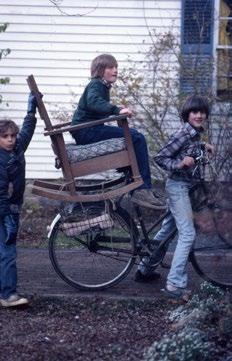
5 minute read
the papergirl
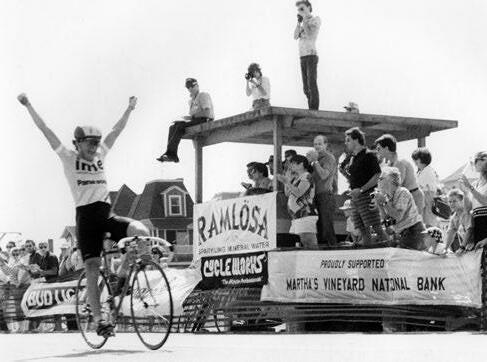
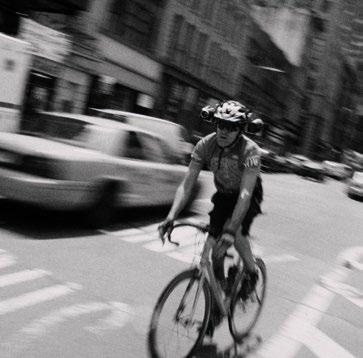
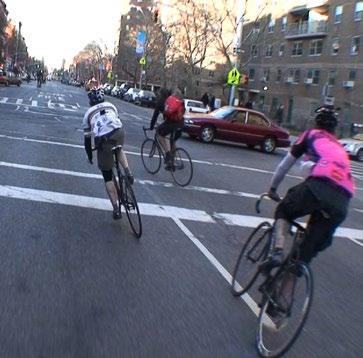
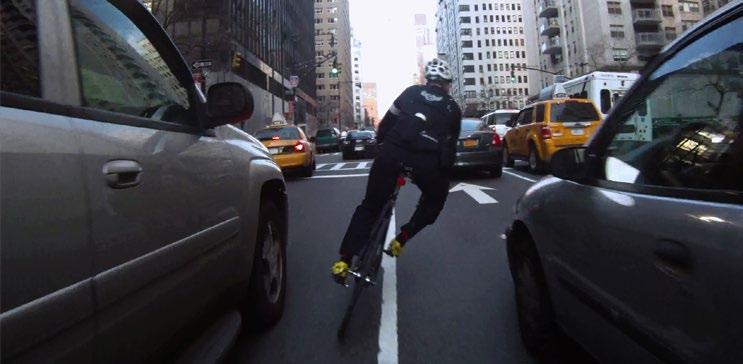
Up ahead, a cross-roads. You barely have time to register the red lights before you’re past them, taxicabs and trucks bearing down on you from all sides. You swerve left behind a bus, then power right, inches from the bull-bars of a pick-up. Horns are blaring wildly. A rider in front tumbles over a station wagon, his bike clattering to the tarmac. But you must push on, lunging and feinting through the snarling traffic, whipping round sleep-walking pedestrians, cutting corners, bouncing down steps, running your fingertips along the side of a bus as it thunders past in the opposite direction.
Lucas Brunelle rides with the very fastest riders in these races, taking even more risks than they do: he has two cameras strapped to his helmet, one pointing forwards, the other back, and even at the busiest intersections he doesn’t look left or right. He relies on steely nerves and a highly developed peripheral vision, keeping his cameras focused on the riders ahead and behind.
These races are controversial to say the least. They’re generally unauthorised and often illegal. The racers’ breathless bravado can scare the general public, catching drivers and pedestrians unawares. In a recent UK TV show sensationalizing the ‘war’ between cyclists and other road users, snippets of Brunelle’s footage were used (out of context, in a highly manipulative way) to highlight just how dangerous and out of control modern cyclists really are. Alleycat racers are often blamed for giving cycling a bad name, for committing all the clichéd crimes – riding on the pavement (sidewalk), jumping red lights, playing fast and loose with the rules of the road.
Those who defend such rides highlight the astonishing skill the riders possess. They make urban traffic look every bit as slow and lumbering and bovine as it is. However crazily they ride, they’ll never be as hazardous to health as the city-choking, obesity-encouraging, motorised traffic they so nimbly negotiate.
Whatever the rights and wrongs of the races themselves, the footage Lucas has collected makes for compelling viewing – as seen in his films Line of Sight and Road Sage, directed and edited by Benny Zenga – a long-term friend of Boneshaker.
Brunelle’s commitment is absolute. For him, riding like this adds a level of hyper-existence to life. It acts as a wakeup call to those who are not living their lives as fully as they could be, to “give them a poke”, “to awaken them … to make them aware of themselves, of their potentiality.” He follows the races around the world – often the best alleycats form part of the annual Cycle Messenger World Championships, an international competition hosted by a different city each year.
“It’s always the same riders up front, the same riders winning these events,” he says, “because they have that skill... being able to go in a space that the eye cannot see. It’s a place in between cars, in between trucks and buses, taking a certain line through a curb, a corridor, that people just don’t realize is there… we use those spaces, those openings, those opportunities, those blind spots, and that’s the space that we exist in, where we race. There are certain things in life that require total complete focus and this is one of them.”
Lucas Brunelle nowadays is a man of pure focus. After 30 years of racing and 13 of filming, he’s open about his troubled past, using it as a tool to show people that they can “rise above anything”. He doesn’t drink or use drugs. But he does not deal in half-measures; he has a reputation as someone whose commitment to the extreme reaches almost to the point of cliché.
He thrives on calculated risk, speed and chaos, yet he finds a kind of spiritual purity in all this swiftsidestepped danger. The voice-over in his latest project, Road Sage, throws a meditative, transcendent light on the footage, bringing together voices as disparate as Henry Miller, Ben Okri, Allan Kaprow and David Foster Wallace:
“There are totally different ways to think about these kinds of situations – in this traffic, all of these vehicles stuck and idling in my way, you get to decide how you’re going to try to see it. If you really learn how to think, how to pay attention, then you will know you have other options. It will actually be within your power to experience a crowded, hot, slow consumer hell-type situation as not only meaningful but sacred - on fire with the same force that lit the stars. The liberated spirit… not being enslaved by the stupidities or by the rules of the machine of today. The big thing is to keep the flame, keep your own flame going. Take a chance – go nearer to the edge.”
Papergirl The
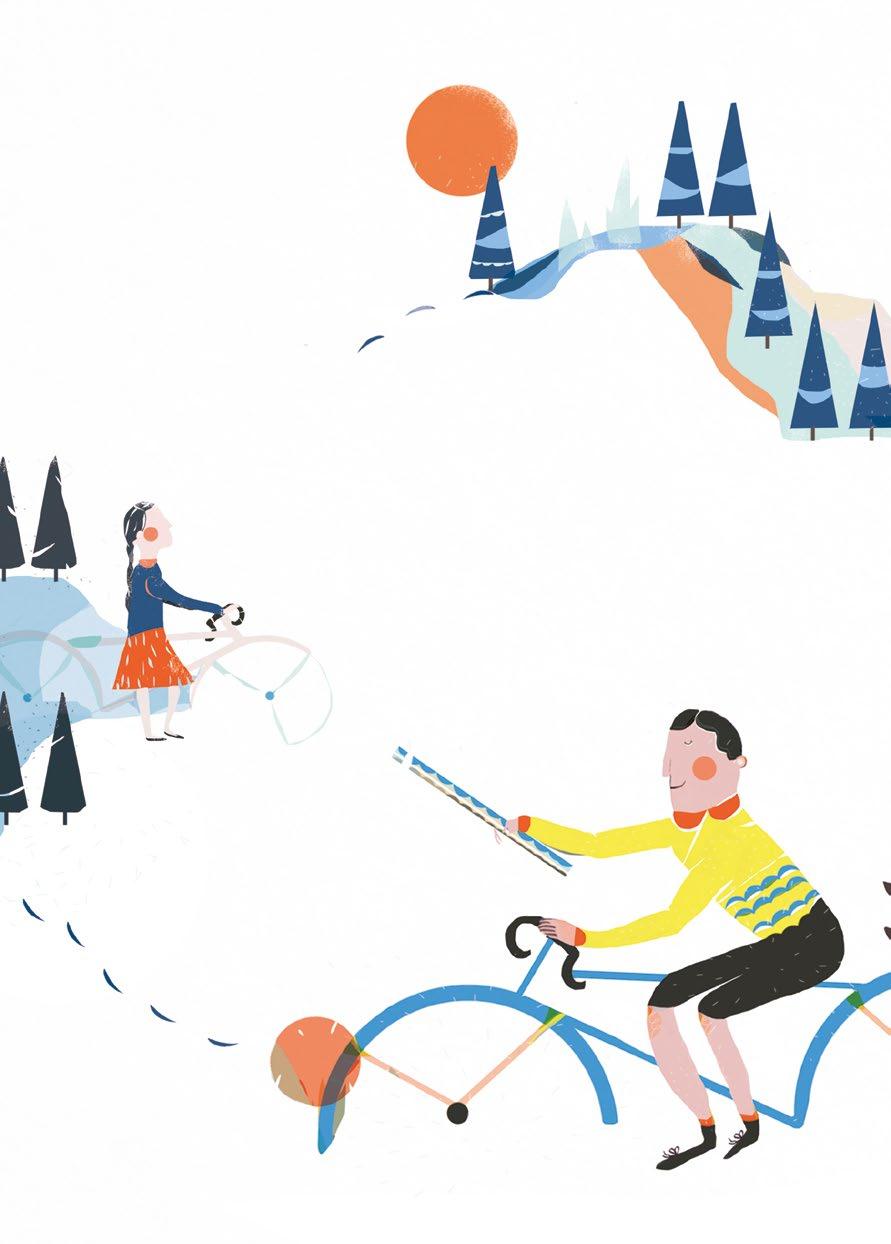
Words: Alex Throssell Illustrations: Gill Chantler | gillchantler.com
As unassuming as a leisurely group ride around norwich may sound, it was probably the greatest ride of my life
In the space of two months, I met and then lost possibly the most influential person in my recent years. It was at a battle of the bands gig in late March that I first met Kiama Petit: a friend of a friend and an uncontrollable bundle of positive energy. In the quiet between acts, she raved about local bike-builder Tom Donhou and told me about the Norwich Papergirl ride, her art-meets-bikes end of university project. By the beginning of May, four weeks after the Papergirl ride, Kiama, still only 21 years old, unexpectedly passed away. A year and a half later, all of the good things that have happened to me since can, in one way or another, be traced back to that Papergirl bike ride. In fact, it was on that single day that I (almost) met the love of my life, found one of my closest friends and got to know the people at the bike shop I’d go on to work with for the next year or so.










